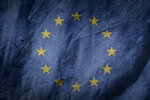01/16/2004
The European issues key guiding framework for emission trading plans
The European Commission has issued key guidance to EU States on how to distribute the initial allocation of emission allowances to businesses under Europe's imminent greenhouse gas trading scheme. The move should help states draw up national allocation plans, which are required by the end of March. In them, governments will state the total volume of greenhouse gas emissions that industrial plants will be allowed to emit annually - giving sectors covered by the scheme a first indication of how tough emission caps will be. Adopted on Wednesday, the guidelines are crucial to the trading scheme's development because the Commission will use them as a benchmark when scrutinising national plans. The EU executive must decide whether each plan converts the directive's vague qualitative requirements into quantitative targets fairly. It has the power to reject them if it feels they have not.
It has two main concerns: first, to ensure governments do not hand out so many emission allowances that they cannot meet national gas reduction obligations contained in the Kyoto protocol. And second, to make sure competition is not distorted by industry sectors in one country receiving significantly more or fewer allowances than competitors in others. The guidance sets out two basic steps for arriving at the allocation. First, authorities must decide what proportion of total national emissions the sectors covered currently generate, and use this to calculate the volume of emissions they should be emitting under Kyoto protocol targets. Secondly they must decide on the "path" of reductions leading from current emission levels to Kyoto-compliant ones. Within this scheme EU countries have quite a degree of freedom to vary both the proportion and the path taken, providing they give good reasons for doing so.
The proportion might vary because of changes in national energy policy or because governments plan deeper emission cuts in other parts of the economy, such as transport and housing. States that have decided to phase out nuclear power may increase emission allowances to compensate for extra fossil power use, for instance. By the same token, member states with plans to expand renewables should decrease the number of allowances accordingly. Here the Commission adds a pointed reminder that all EU members have promised to increase the share of renewable electricity under a 2001 directive. And though the directive says the allowance allocation must decrease from year to year on a path "consistent with" Kyoto targets, the Commission says this need not be linear - thus giving states scope to be generous with allowances early on as long as they grow more stingy later. The guidelines also cover procedures for granting allowances to individual plants. These include how to determine which have the most and least potential for reductions, and thus how many allowances they should get, plus rules for plants which have already taken action to cut emissions and those built after the trading scheme has begun.
It has two main concerns: first, to ensure governments do not hand out so many emission allowances that they cannot meet national gas reduction obligations contained in the Kyoto protocol. And second, to make sure competition is not distorted by industry sectors in one country receiving significantly more or fewer allowances than competitors in others. The guidance sets out two basic steps for arriving at the allocation. First, authorities must decide what proportion of total national emissions the sectors covered currently generate, and use this to calculate the volume of emissions they should be emitting under Kyoto protocol targets. Secondly they must decide on the "path" of reductions leading from current emission levels to Kyoto-compliant ones. Within this scheme EU countries have quite a degree of freedom to vary both the proportion and the path taken, providing they give good reasons for doing so.
The proportion might vary because of changes in national energy policy or because governments plan deeper emission cuts in other parts of the economy, such as transport and housing. States that have decided to phase out nuclear power may increase emission allowances to compensate for extra fossil power use, for instance. By the same token, member states with plans to expand renewables should decrease the number of allowances accordingly. Here the Commission adds a pointed reminder that all EU members have promised to increase the share of renewable electricity under a 2001 directive. And though the directive says the allowance allocation must decrease from year to year on a path "consistent with" Kyoto targets, the Commission says this need not be linear - thus giving states scope to be generous with allowances early on as long as they grow more stingy later. The guidelines also cover procedures for granting allowances to individual plants. These include how to determine which have the most and least potential for reductions, and thus how many allowances they should get, plus rules for plants which have already taken action to cut emissions and those built after the trading scheme has begun.
- Source:
- Sunday Times, London
- Author:
- Trevor Sievert, Online editorial journalist
- Email:
- press@windfair.net
- Keywords:
- European Commission, EU, Kyoto protocoll, wind energy, renewable energy










